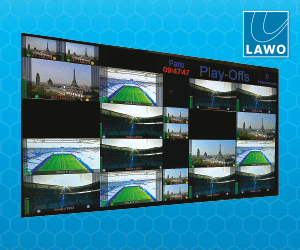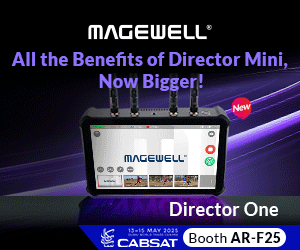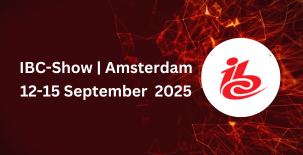In an exclusive interview with BroadcastPro Middle East, Jordan Media Citys CEO Radi Alkhas talks about the media zones unique offerings and its recent projects Tell us a bit Jordan Media City? JMC is a private company founded as a result of an agreement between the Jordanian government and Dallah Production Company. […]

In an exclusive interview with BroadcastPro Middle East, Jordan Media Citys CEO Radi Alkhas talks about the media zones unique offerings and its recent projects
Tell us a bit Jordan Media City?
JMC is a private company founded as a result of an agreement between the Jordanian government and Dallah Production Company. It was set up with a capital of US $14 million.
Our aim is to be the leading media hub in the region with the ability to play out and uplink television channels to cover the globe with state-of-the-art studios and production facilities.
We serve as a global satellite and fibre content distribution service provider and offer uplink to satellites covering the Arab World, Europe, Asia, Australia and Africa; downlink and turnaround services; playout of television content services; satellite news gathering (SNG), and sports and other feed services. We also offer fibre optic capacity for global distribution; production facilities and support as well as training courses.
What facilities do you have presently?
Our main complex boasts two production studios of 600m2 in net floor area, along with control rooms and artists areas. The studios are used for the production of television series and talk shows. Also, two studios of 70m² are used for interviews and news feeds. We have twenty post production editing suites furnished with the latest equipment.
JMC has a nine-camera OB van equipped for sport and large events coverage, and a four-camera unit equipped with mixing, recording and editing facilities.
We have a 1.9m flyaway SNG in both C and Ku bands.
Our playout system is very sophisticated. JMC operates state-of-the-art ingest servers, archive systems and playout services for 70 channels.
We also have a teleport located on a 40,000sqm land area.
JMC has a number of earth stations for reception and retransmission from Asian and European satellites to Nilesat 101, 102, 104 and Arabsat 2B, Badr-4, Badr-6, Eutelsat (Hotbird 8) and Asiasat 5. In addition to this, we also have a fibre link connected to Globecasts global network.
How many people work at JMC?
We have a full time staff of 170 individuals who have extensive experience in the production and engineering fields and are considered to be among the best in Jordan and the region.
Can you explain the nature of your partnership with Arabsat and what joint offerings you provide clients?
Yes, JMC and Arabsat have a successful partnership. We have a joint venture for a 32-channel playout centre. Essentially, JMC provides Arabsat clients playout and uplink facilities to any Arabsat satellite.
Do you have a contract with Yahlive?
Yes. We have completed our negotiations with Yahlive in the UAE and are looking to sign the contract.
What is the advantage of going with Yahsat?
All the channels from Yahlive are to be transmitted in HD. The European beam is less expensive than Hotbird but the orbit position is 52.5E°.
Are you building a new earth station?
Yes. Once the contract is signed by Yahlive, JMC will build an earth station to uplink to the Yahlive satellite, which is looking to transmit channels only in HD.
Which supplier are you looking to partner with for the earth station?
The supplier for the earth station will be ND SatCom. For the HD compression equipment, we are looking at three companies primarily Ericsson, Harmonic and Thomson.
Whats the budget for this?
US $1.5 million is the proposed budget.
Whats your opinion about Ka-band?
We are still negotiating with data companies about Ka-band. Ka satellite technology could be useful in the Middle East and North Africa because of the low rate of rain fall.
We hear you have plans to build a new Technology Monitoring Centre?
Yes, we are studying the feasibility of offering content monitoring services for TV channels covering the Middle East and North Africa.
How much capital would be necessary to launch such a facility?
This type of project will grow in time. We will start with 20 channels and gradually grow to 300 channels. The investment depends on the demand. In the final stages, it could go up to US $500,000. The investment will also depend on how elaborate the monitoring system is.
Are you the only free zone in Jordan?
No, Saudi Jordanian Media City also operates out of Jordan.
What are the challenges you face now?
We have to be able to forecast what the market needs and be one of the frontrunners in providing that solution. In addition to satellite and fibre options, there are so many different ways to deliver content.For instance, we are looking at a potential Content Bank or as some like to call it, a Content Mall. This is to distribute content to broadcasters instead of delivering it on tapes. We are also looking at the ability to deliver to mobile providers, IPTV and telcos.
Are you doing anything on this front?
We are talking to partners in these markets and are looking at potential joint ventures.
Moving forward, what are JMCs plans?
We need to have more links with Europe and Asia; more content storage and distribution to different platforms; more high-quality Arabic production; and more local, more inclusive and more interactive media.
















































































